The Japanese Initiatives That Helped to Halt Zambia’s Worst Cholera Outbreak in History
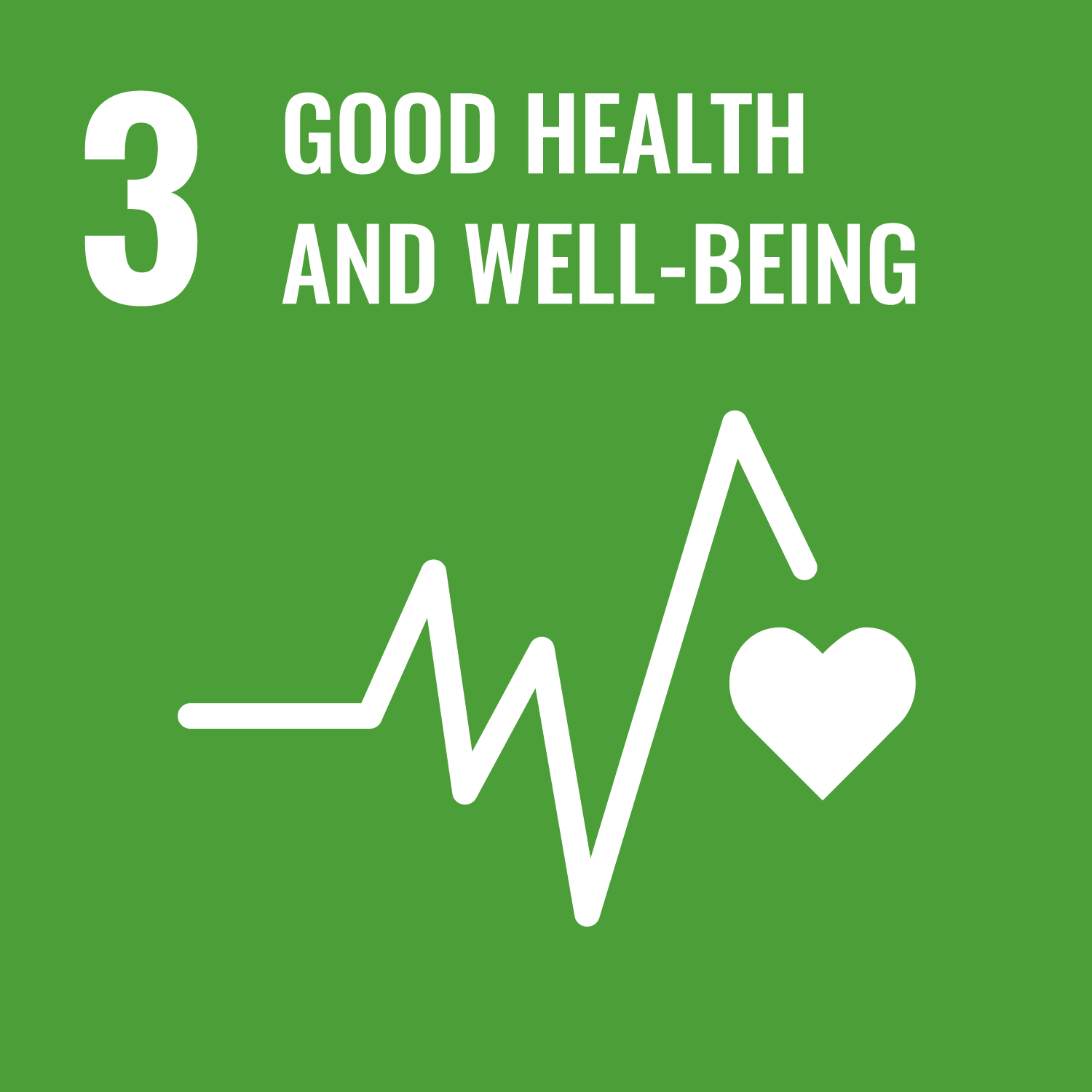
2024.07.18
Zambia’s worst cholera outbreak in history began in October, 2023. Two JICA health and medical project teams on the ground were crucial in preventing its further spread. This is the story of how two JICA health and medical project teams were crucial in preventing its spread, earning high praise from the Zambian government.

3D Illustration of Cholera Bacteria (Adobe Stock)
The first confirmed case of cholera in Zambia's capital, Lusaka, was reported on October 15, 2023. Three days later, the Zambian government declared an outbreak. Cholera*, which is caused by ingesting water or food contaminated with Vibrio cholerae bacteria, often occurs in densely populated areas with limited access to safe water. Lusaka has many densely populated impoverished areas, known as “compounds” or shanty towns, where this outbreak originated.
The rainy season in Zambia, which lasts from December to April, was fast approaching. During this season, the compounds are prone to flooding, which further degrades sanitary conditions as water sources become contaminated with waste from untreated toilets.
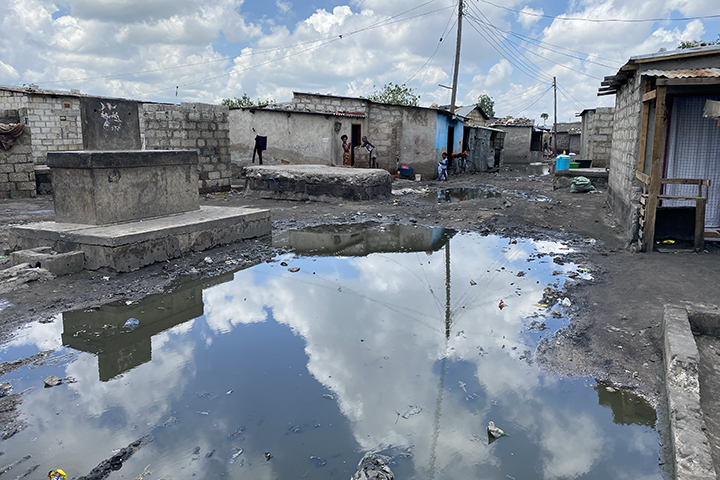
In compounds where many of the impoverished live, there is no proper water and sewage systems. When it rains, water systems quickly overflow, worsening sanitary conditions.
"From the beginning, we knew the number of patients would surge," says Norizuki Masataro, a JICA Expert who has been working on the Project for Strengthening Management Capacity of the General Hospitals in Lusaka District since 2021.
From the early stages of the outbreak, Norizuki and his team began preparing for a surge in patients. They started by training nurses at the five hospitals involved in their project on treatment protocols, infection control, and patient flow. They also set up oral rehydration points throughout the community.
Treating cholera requires quick replenishment of fluids and salts lost through diarrhea. Many residents in these compounds have a deep-seated stigma against hospitals, believing they are places where people go to die. This stigma often prevents residents from seeking medical help for symptoms like diarrhea. Some areas are simply too difficult to access as well. Setting up these oral rehydration points was a crucial initiative.
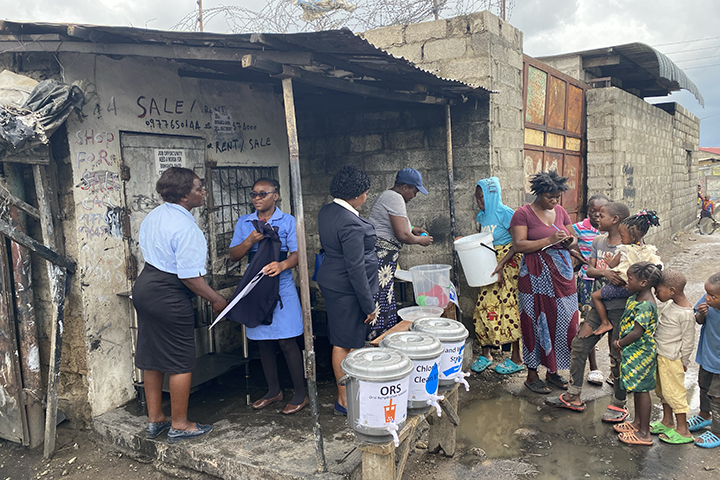
Oral rehydration points were established in compounds that had poor access to hospitals
Norizuki's fears were realized with a dramatic increase in patient numbers as the rainy season began. At its peak, the weekly average of new patients reached 461 per day, according to WHO reports. Existing hospital facilities ran out of beds, forcing patients to lie on the floor, which led to a decline in the quality of care. In the midst of this crisis, on January 2, 2024, the Zambian government decided to set up a 600-bed cholera treatment center at the National Heroes Stadium in Lusaka. Two days later, the Zambian Minister of Health visited the stadium and declared the center open.
"On January 3, the day following the decision to open the center, we toured the stadium, mapping out infection control zones and waste collection points, and assessing the room sizes and windows to build an effective intake system,” said Norizuki. “The next day, we explained these arrangements to the visiting Minister of Health and finalized them. As soon as the center opened, however, patients flooded in, and the treatment center descended into chaos. The number of beds was expanded to 1,000, and together with Zambian doctors and nurses, we worked tirelessly to restore order, driven by a strong determination to overcome this crisis.”
On February 4, 2024, Zambian President Hakainde Hichilema (third from right) and Norizuki (second from left) visited the National Heroes Stadium to comfort hospitalized patients. Norizuki, an infectious disease expert, also dealt with the COVID-19 pandemic in Japan. He says this experience was valuable in Zambia.

The cholera treatment center set up at the National Heroes Stadium in Lusaka. Beds and IV stands were constructed overnight by local carpenters. Handmade tags for patient records and severity levels hang from the stands, assisting orderly management on-site.
In addition to support for infection control, support for epidemiology, laboratory, and case management played vital roles during the outbreak. Working with the Zambia National Public Health Institute (ZNPHI), the spearhead for outbreak control programs, JICA Expert Imamura Tadatsugu led efforts in collecting and testing stool samples from patients, analyzing clinical data from the cholera treatment center, and mapping the spread of the infection in Lusaka.
Imamura has been working since April 2023 on the Project for Strengthening Laboratory-based Surveillance for Infectious Diseases at the ZNPHI. The testing system established through this project took charge of examining stool samples suspected of cholera from medical facilities in Lusaka and other regions during the outbreak.
"From the beginning of the project, we created manuals and conducted repeated training with Zambian staff to build a systematic testing structure that would be useful during a cholera outbreak,” said Imamura. “The outbreak occurred just as we were about to start full-scale operations at the end of 2023, so we were able to put our preparations to good use.”

Imamura (right) instructing local health care workers at a clinic on stool sample collection methods.
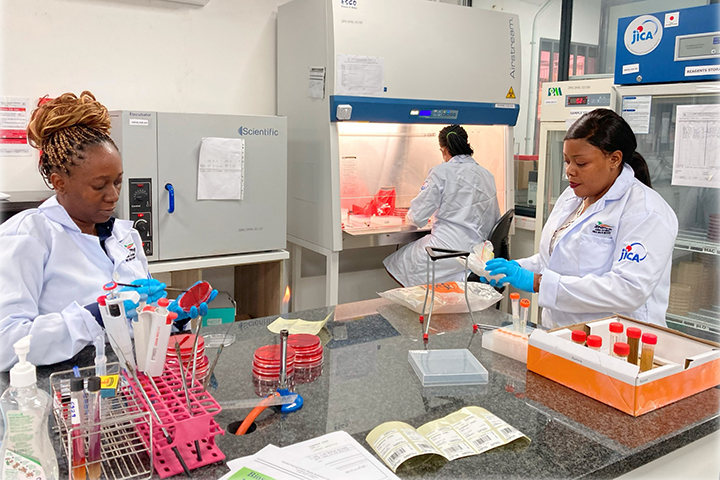
Lab Technicians at the ZNPHI conducting stool culture tests.
Imamura had served as an infectious disease control advisor in Zambia from 2020 to 2022. The trust he built with Zambian stakeholders at that time was crucial to his being tasked by the Zambian government to analyze significant cholera infection data.
The collaborative team of ZNPHI and JICA were able to implement timely and appropriate data-based countermeasures. They did this by sharing epidemiological and clinical data with the Ministry of Health and medical facilities such as how infection spreads in the community, the types of risk factors, the emergence of antibiotic-resistant bacteria, the quality of care for hospitalized patients, and the locations of areas with insufficient doctors and nurses.
In February 2024, a Japanese expert team on outbreak response, comprising members from the National Institute of Infectious Diseases, the National Center for Global Health and Medicine, and JICA, arrived in Zambia. They conducted on-site investigations and proposed improvements for the community oral rehydration points. Furthermore, the team supported Zambian officers with verifying the factors that contributed to the spread of the infection, digitized and analyzed clinical data, and enhancing testing accuracy.
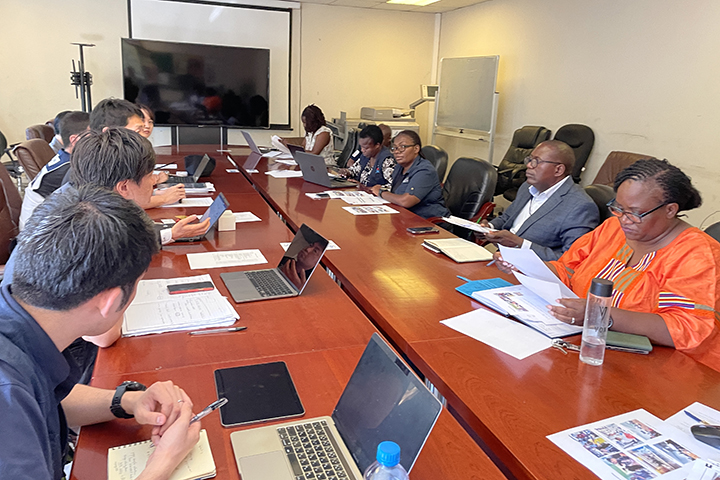
At meetings with the Lusaka Provincial Health Office, the expert team proposed improvements to community oral rehydration points.
These efforts by Japan received high praise from the Zambian government. The President expressed his gratitude, stating that he felt the deep love of the Japanese people for Zambia and its people through deliveries of many supplies and the dedicated support activities of the Japanese experts.
Zambia has now overcome the outbreak and regained stability. The outbreak ended up being the worst in Zambia's history, with approximately 23,000 infections and 740 deaths (as of May 12, 2024).
As Zambia has experienced several cholera outbreaks in the past, preventing the next outbreak is a significant challenge.
After a previous cholera outbreak in Zambia in 2018, JICA dispatched a survey team and recommended strengthening the capacity of hospitals in outbreak-prone areas and enhancing the infectious disease surveillance system. This led to the creation of the two projects that supported the current outbreak response. Now, these projects are being reviewed to expand cooperation and prevent future outbreaks.
The global COVID-19 pandemic is still fresh in everyone's memory, leaving various experiences and lessons. Infectious diseases are a common challenge that transcends borders, and when or where they will strike next is unknown. The infectious disease issues faced by one country are never someone else's problem. Strengthening prevention and preparedness in peacetime and responses during crises is a global imperative.
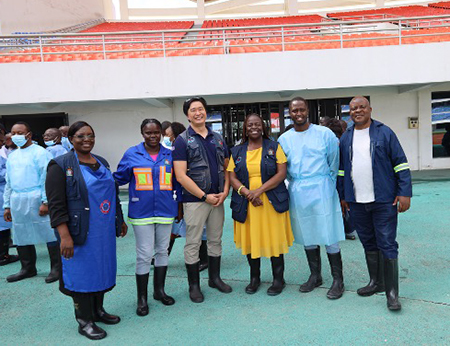
Norizuki with doctors, nurses, and infection control officers who fought cholera together at the stadium.
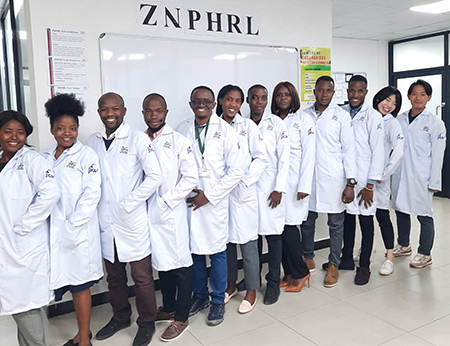
Imamura in charge of surveillance, and Kaneko Chiho in charge of lab management, at the ZNPHI’s reference laboratory that serves as the command center for Zambia’s infectious disease response.
scroll